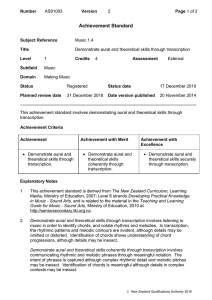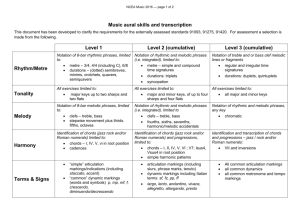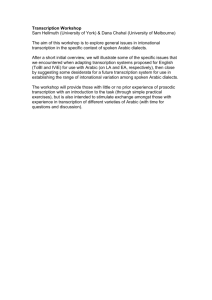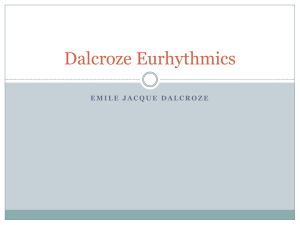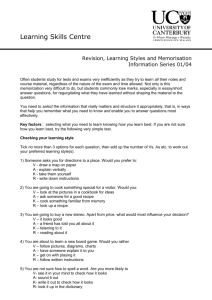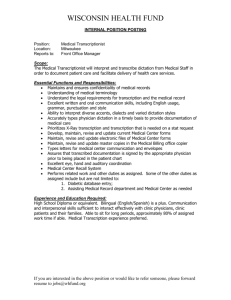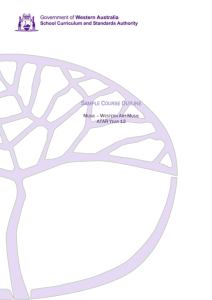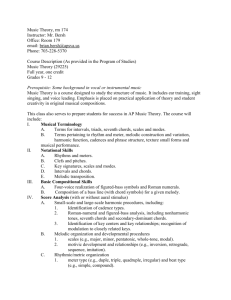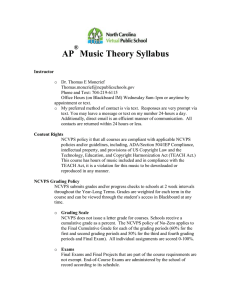91093 Demonstrate aural and theoretical skills through transcription
advertisement
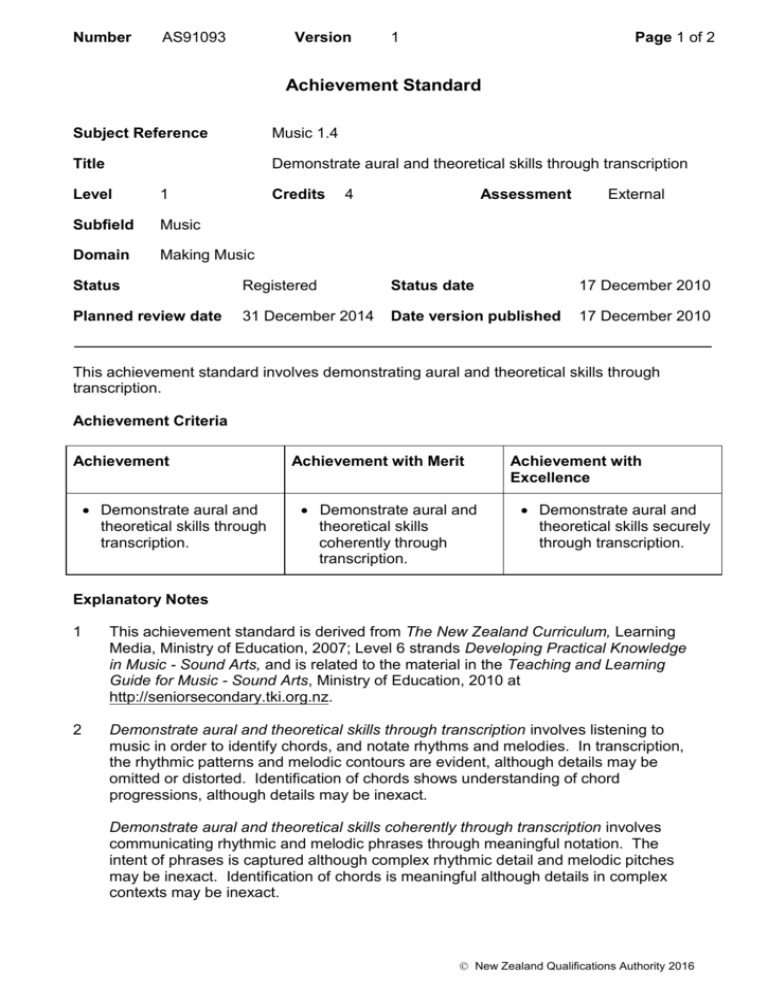
Number AS91093 Version 1 Page 1 of 2 Achievement Standard Subject Reference Music 1.4 Title Demonstrate aural and theoretical skills through transcription Level 1 Credits Subfield Music Domain Making Music 4 Assessment External Status Registered Status date 17 December 2010 Planned review date 31 December 2014 Date version published 17 December 2010 This achievement standard involves demonstrating aural and theoretical skills through transcription. Achievement Criteria Achievement Demonstrate aural and theoretical skills through transcription. Achievement with Merit Demonstrate aural and theoretical skills coherently through transcription. Achievement with Excellence Demonstrate aural and theoretical skills securely through transcription. Explanatory Notes 1 This achievement standard is derived from The New Zealand Curriculum, Learning Media, Ministry of Education, 2007; Level 6 strands Developing Practical Knowledge in Music - Sound Arts, and is related to the material in the Teaching and Learning Guide for Music - Sound Arts, Ministry of Education, 2010 at http://seniorsecondary.tki.org.nz. 2 Demonstrate aural and theoretical skills through transcription involves listening to music in order to identify chords, and notate rhythms and melodies. In transcription, the rhythmic patterns and melodic contours are evident, although details may be omitted or distorted. Identification of chords shows understanding of chord progressions, although details may be inexact. Demonstrate aural and theoretical skills coherently through transcription involves communicating rhythmic and melodic phrases through meaningful notation. The intent of phrases is captured although complex rhythmic detail and melodic pitches may be inexact. Identification of chords is meaningful although details in complex contexts may be inexact. New Zealand Qualifications Authority 2016 Number AS91093 Version 1 Page 2 of 2 Demonstrate aural and theoretical skills securely through transcription involves communicating rhythmic and melodic phrases so that the original music is reproduced with consistent accuracy. Identification of chords is exact in all contexts. 3 A selection from each of the following will be required: rhythmic phrases up to a maximum of eight bars in: 3 4 6 4 4 8 (limited to crotchets, quavers, semiquavers, minims, semibreves, dotted rhythms, and triplets) melodic phrases up to a maximum of eight bars in a major key (in keys up to two sharps and flats) in treble and bass clefs chords in root position in major keys (in keys of up to two sharps and flats) (limited to I, IV, V VI eg B♭, E♭, F, Gm). 4 Assessment Specifications for this achievement standard can be accessed through the Music Resources page found at http://www.nzqa.govt.nz/qualificationsstandards/qualifications/ncea/ncea-subject-resources/. Quality Assurance 1 Providers and Industry Training Organisations must be accredited by NZQA before they can register credits from assessment against achievement standards. 2 Accredited providers and Industry Training Organisations assessing against achievement standards must engage with the moderation system that applies to those achievement standards. Accreditation and Moderation Action Plan (AMAP) reference 0233 New Zealand Qualifications Authority 2016
